Desktop Tips
Tip #307
June 27, 2023
Update Speed Dial thumbnails with one click.
If the Speed Dial thumbnail is missing or you don’t like the current one, you can update it with a new screenshot of the web page. If you prefer to choose an image for the thumbnail, follow our directions in Tip #69.
To quickly update Speed Dial thumbnails:
- Hover over one of the Speed Dials.
- Click on
 “Update thumbnail” in the top left corner of the Speed Dial.
“Update thumbnail” in the top left corner of the Speed Dial.
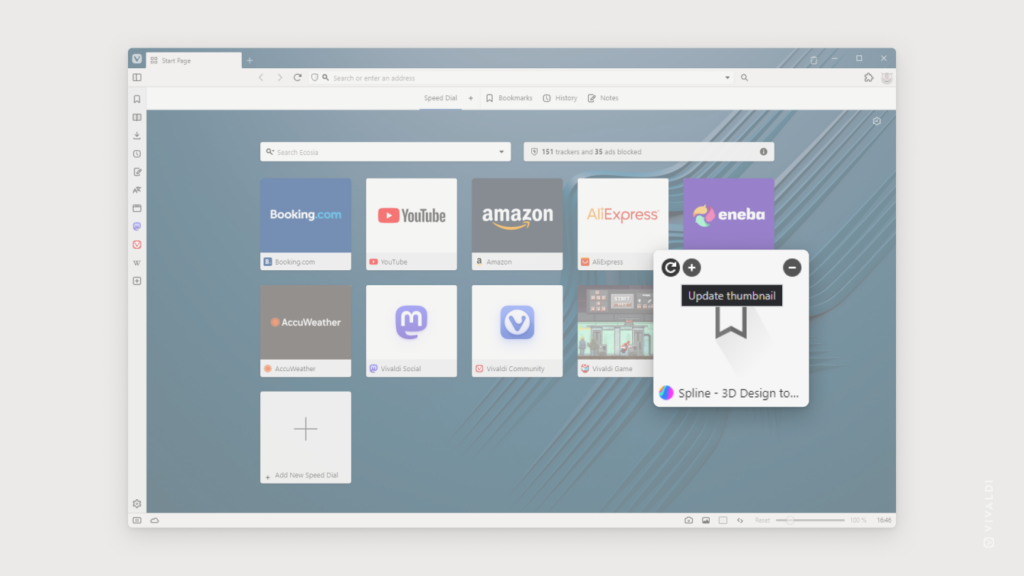
Tip #305
June 23, 2023
Turn the Search Field on the Address Bar into a Search Button.
If you feel like the Search Field takes a little too much space on your Vivaldi Browser’s Address Bar, you can have it displayed as a button instead. The button is also a great option if you want to move the Search function to the vertical Panel bar.
To display Search as a button:
To search for something on the web, click on the button to show the full Search Field.
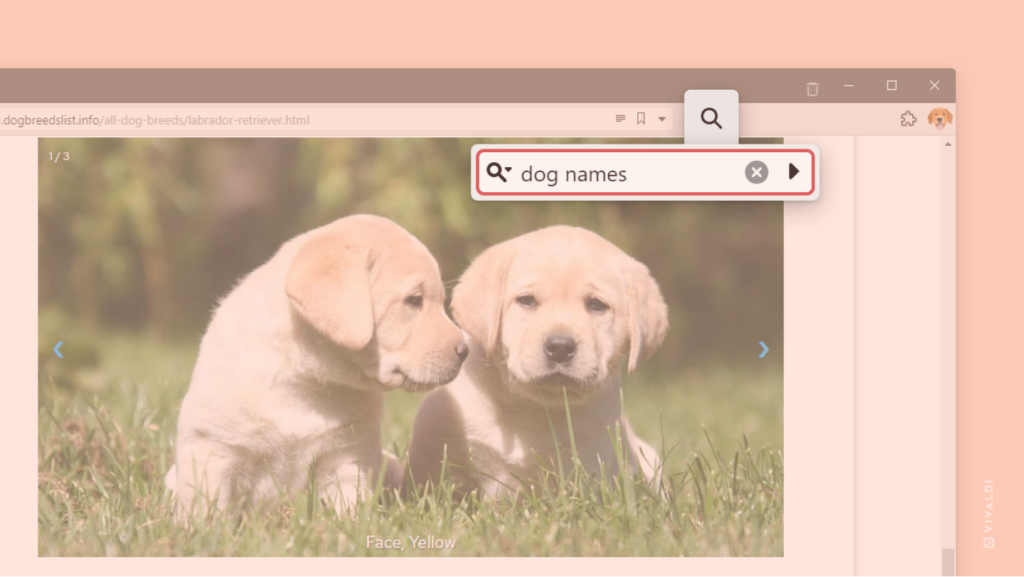
Tip #303
June 21, 2023
Open all Bookmarks in a new tab.
By default, Bookmarks open in the active tab. If you’d rather not have Bookmarks hijack websites you were viewing, you can opt for opening them in their own tab as well.
To always open Bookmarks in a new tab:
- Go to Settings > Bookmarks.
- Enable “Open Bookmarks in New Tab”.
To open a single bookmark differently from your default setting, right-click on the bookmark and select the opening option you prefer – “Open in New Tab”, “Open in Background Tab”, “Open” (in active tab), plus “Open in New Window”, “Open in New Private Window”.
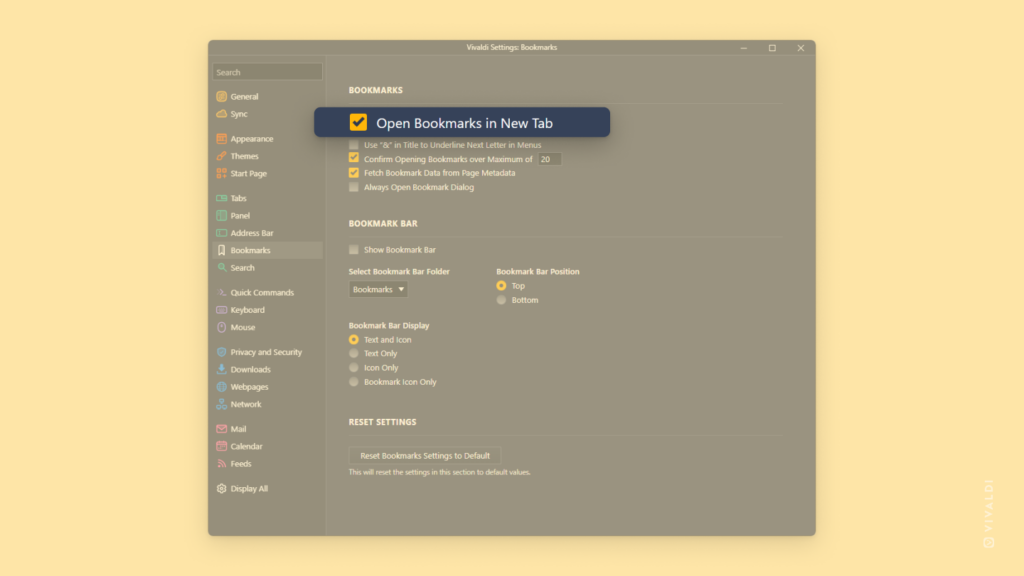
Tip #302
June 20, 2023
Create recurring tasks in Vivaldi Calendar to stay on top of your responsibilities.
Tasks in the Vivaldi Calendar and in their own Tasks Panel are a great way to keep track of your to-do list. To make life even easier, you can create recurring tasks for things you need to do regularly.
To create a recurring task:
- Start creating a new task in the Tasks Panel, Calendar Panel, or in the Calendar tab.
- Enter details, like the title and due time of the task.
- Switch to the Recurrence view.
- From the drop-down menu, select whether you want the task to repeat daily, weekly, monthly by date, monthly by week, or yearly.
- Depending on your choice, review the additional options for each repetition option.
- When you’re ready, click “Done”.
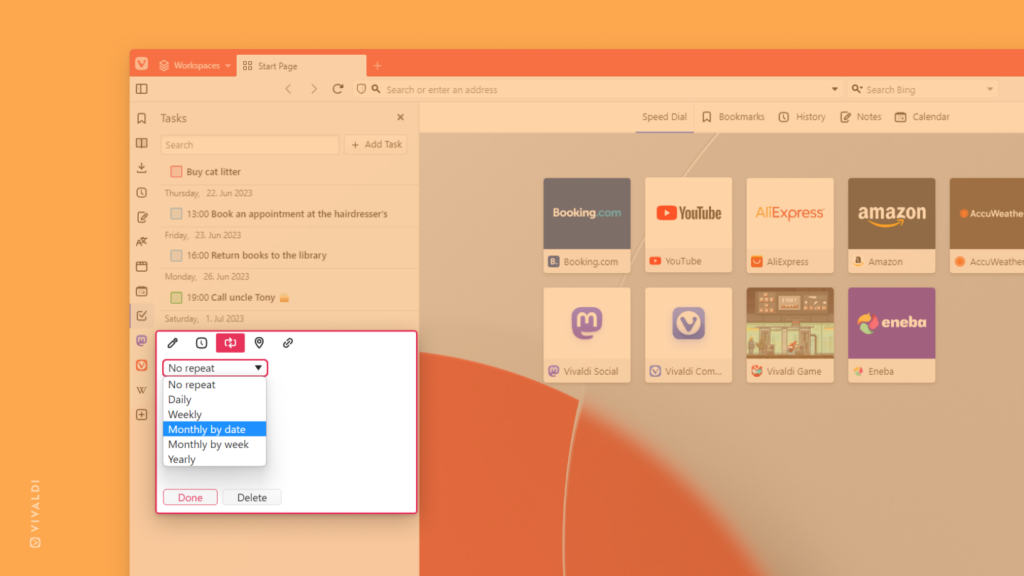
Tip #301
June 19, 2023
Share multiple links in one go by copying all links.
Copying links one by one to share or save them is a thing of the past in Vivaldi. Instead, you can copy all links you have open in a Workspace and Tab Stack with just a couple of clicks. In addition, you can manually select specific tabs and copy the links of those.
To copy multiple links at once:
- Right-click on a Workspace in the Workspaces menu, on a Tab Stack, or on one of the tabs you selected on the Tab Bar.
- Select “Copy all links” from the context menu.
- Paste the list of links in a message you’re sending to someone or in a note/document where you want to save them.
Now, sharing your research on the trip you’re planning with your family, sending a bunch of memes to a friend, who needs cheering up, or something else is smoother and faster than ever before.
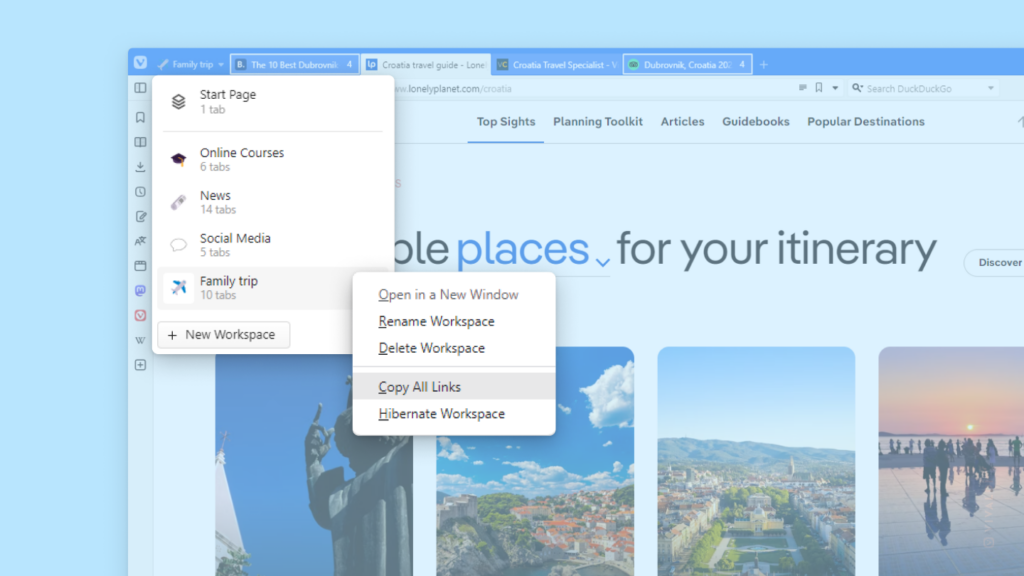
Tip #298
June 14, 2023
Open a link in a different Workspace through the context menu.
Workspaces allow you to divide tabs into independent sections. But what if you come across a link in one space that you’d like to open in another? You could open the link in the current Workspace and move the tab to a different one, but it’s faster to open it directly as a new tab in the Workspace you want to have the page in.
To open a link in a different Workspace:
- Right-click on the link to open the context menu.
- Select “Open Link in Another Workspace” > select the destination Workspace.

Tip #296
June 12, 2023
Open links from Quick Commands in a New Tab.
Quick Commands allow you to search everything in Vivaldi – Bookmarks, open Tabs, commands, etc. You can also open web links through Quick Commands by entering the URL and pressing Enter. By default, the link will open in the active tab, but if you prefer to open the link in a new tab:
- Go to Settings > Quick Commands > Quick Command Options.
- Enable “Open Links in New Tab”.
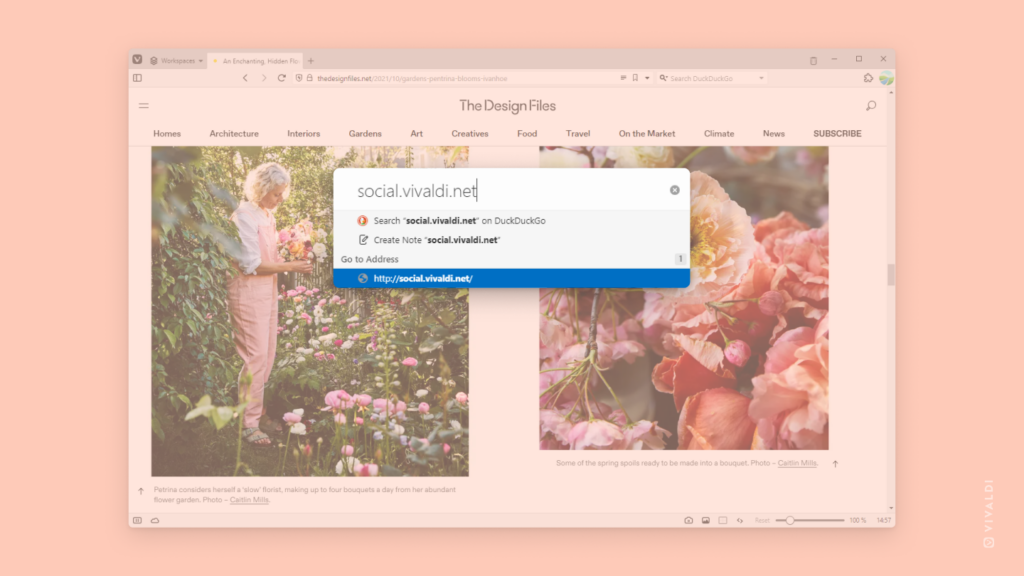
Tip #293
June 7, 2023
Enable “Show Full Address” to see the complete web page URL without needing to focus on the Address Field.
Looking at the Address Field you may have noticed that you don’t see the full address unless you focus on it. That’s because we want you to easily see the most important parts of the URL – the domain and the path. The protocol in front can give you false security, and parameters and anchors at the end can add so much confusion that it can be hard to see which website you are using.
But if you prefer to see the full address at all times:
- Right-click on the Address Field.
- Select “Always Show Full Address”.
Alternatively, enable it in Settings > Address Bar > Address Field Options.
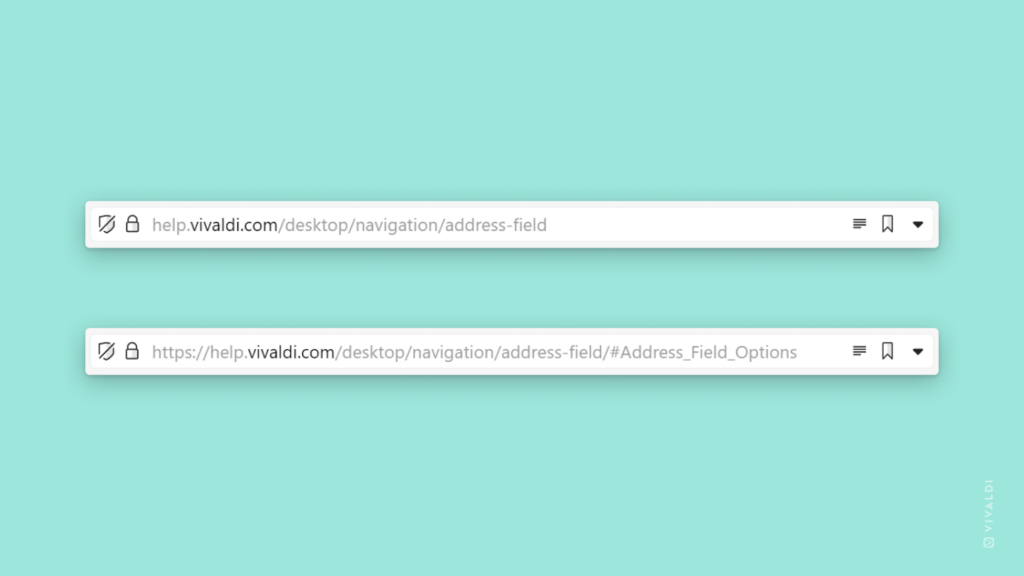
Tip #292
June 6, 2023
Instead of looking through folders of Bookmarks, search for the one you need.
It’s easy to have too many Tabs open, but it’s even easier to accumulate a large number of Bookmarks. Finding a bookmark by scrolling through the long lists and folders can be time-consuming. Using the search option in the Bookmarks Panel, Bookmarks Manager, Address Field, or Quick Commands will find the correct bookmark for you a lot faster.
To search for Bookmarks, start typing the name, URL, nickname, or description in one of the places mentioned above and (double-)click on a search result to open the bookmark.
Tip #290
June 2, 2023
Mark messages as read immediately after opening them.
Vivaldi Mail has three read states – Unseen, Unread, and Read. Messages go from Unseen to Unread automatically after opening them, but marking each message as Read is an active choice. The Unread state is a good way to keep track of messages you’ve already seen but have not dealt with yet.
If this doesn’t fit your workflow, you can skip the Unread state by enabling “Automatically Mark as Read” in Settings > Mail > Mail Settings > Unread Messages.
Tip #289
June 1, 2023
Download Custom Icons for your browser from Vivaldi Themes.
Using Custom Icons with your browser theme, allows you to take the uniqueness of your Vivaldi to yet another level. You can create an icon for each toolbar button yourself or you can make use of the numerous Themes with Custom Icons the creative minds of Vivaldi Community members have shared with everyone.
To download custom icons:
- Go to themes.vivaldi.net.
- Click on, for example, “View all featured themes” to open a page with all the filtering options.
- In the menu on the left, tick the box for “Custom Icons”.
- Apply other filters, if you wish.
- Find a theme you like.
- Download it to get a preview and if you want to keep it, click Install.
To use custom icons from a different theme with your active theme:
- Go to Settings > Themes > Editor > Icons.
- Make sure “Use Icon Set from” is enabled and select a theme from the drop-down menu.
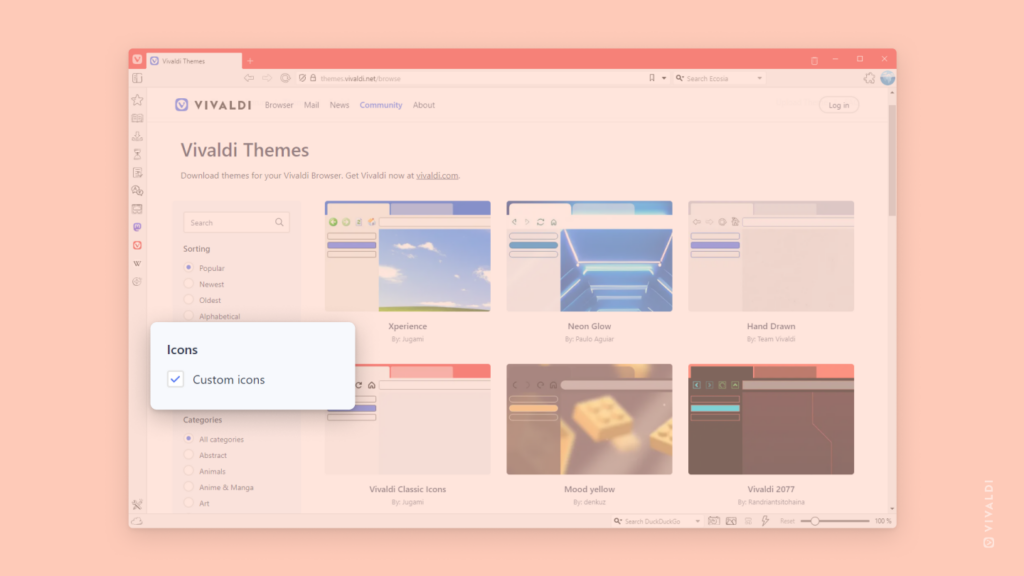
Tip #288
May 31, 2023
Give the Search Field the space it needs by resizing it.
In addition to deciding what elements are displayed on your Vivaldi Browser’s toolbars, you can also adjust the size of some of them, for example, the Search Field on the Address Bar.
To resize the Search Field:
- Hover over the left edge of the Search Field.
- Click and drag the mouse left to make it bigger or right to make it smaller.